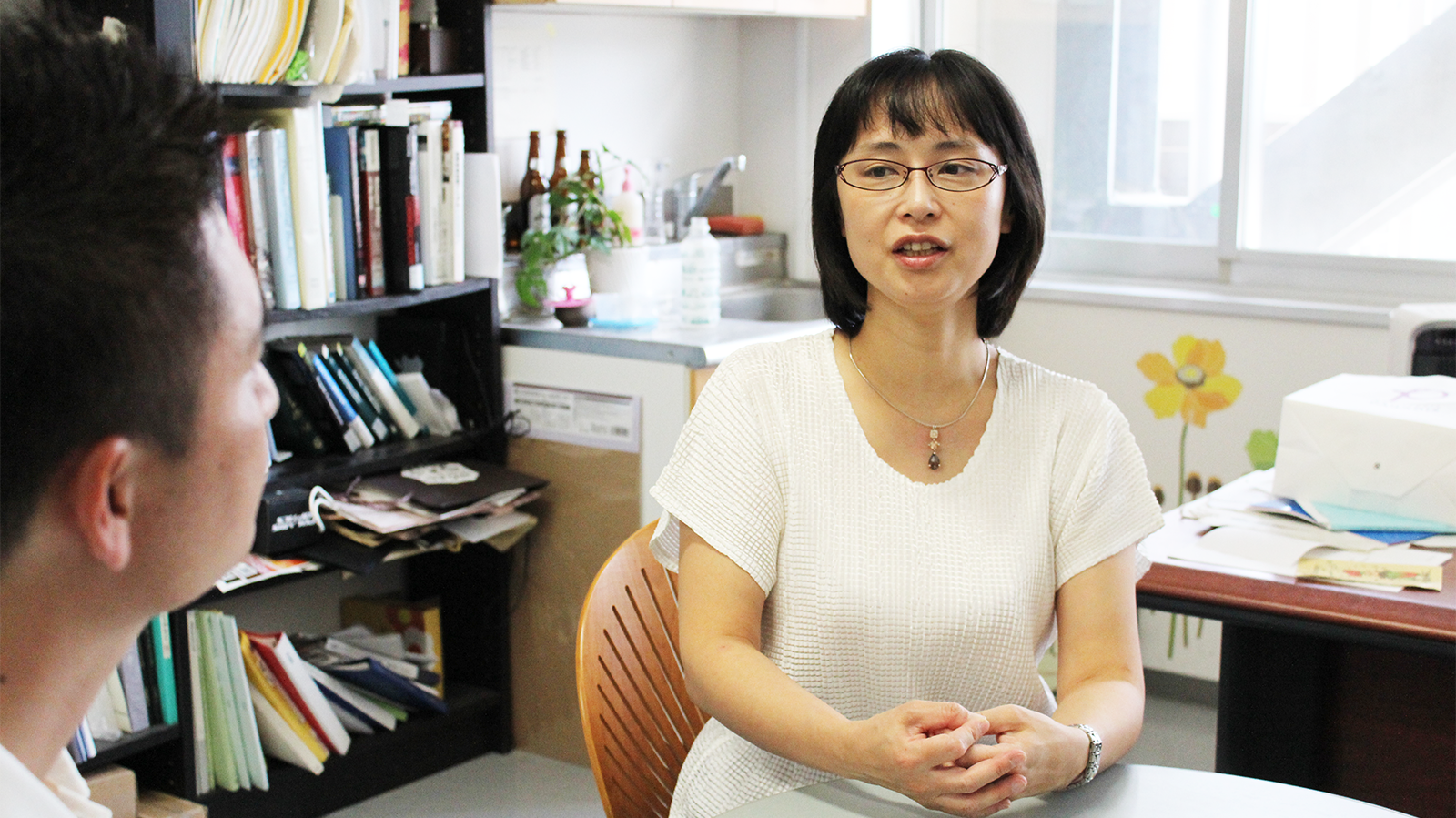What was the Inspiration Behind the Researchers’ Community for Child Care Support at Nagoya University?
- 다양성기사
- 7월 1, 2019

Following Nagoya University’s publicly advertised recruitment drive for female principal investigators, Professor Azusa Kamikouchi took up her post at the university in 2011 at the age of 36. Professor Kamikouchi has achieved renown as a female proponent of science in Japan. The Japanese weekly magazine Aera chose her for the science category in its 2012 “Top-100 people who will rebuild Japan.” It is remarkable to think that such a noted academic arrived at her post in Nagoya University as the sole parent of an infant.
Professor Kamikouchi witnessed how the university’s support measures failed to cover the needs of academics whose job compelled them to live separately from their partner and raise their children alone. She felt that if no support was forthcoming, then fellow academics with similar circumstances should support each other. This idea was the spark that gave rise to the community.
“When I got the job at Nagoya University, I moved to Nagoya with my child and my mother. Initially, I struggled to balance the responsibilities of getting the lab up and running and taking care of my child. However, I didn’t have to suffer in silence. Even before taking up the post, I discussed my accommodation and childcare needs with Narie Sasaki from the Center for Gender Equality. I felt very grateful to have a senior figure with whom I could discuss my concerns. After taking up the post, I became increasingly aware of people in the same situation as me—women professors who had to raise children by themselves. Initially, I exchanged information on parenting with two other academics: Miho Tagawa, who works in engineering, and Hiroko Bannai, who has since moved to another university. However, Narie suggested that we expand our three-person group into a university-wide network. That way, she said, we could obtain a lot more information and provide support to many more people. We decided to take up her suggestion. We launched a website and spread the word among the academics with children who we met at a nursery. The community now consists of more than 10 members who share useful information with each other.”
The community is based on a single mailing list. This simple structure is important. Members seek help and advice on the problems they face, and other members respond. Because the members are academics with busy schedules, it makes perfect sense to adopt this simple structure of mutual support and reduce unnecessary processes.
“We advise each other on the best clinics or hospitals to visit, ask each other to drop off or collect our children, and babysit for each other. There are times when we realize that we need to do some things as a group and decide to get together. When an academic is about to take up a position at the university, we sometimes advise her to rent an apartment close to where the other members live. No one acts as the leader. Instead, members lend a hand when they are free.”
Nagoya University is noted for having a relatively advanced childcare support system. According to Professor Kamikouchi, the university’s official support system and the community’s self-led efforts complement each other. “One advantage of a university-led childcare support program is that you can prepare budgets and projects on a grand scale. On the flipside, it takes time for these projects to be implemented. As for our network, we can’t spend a lot on our activities, but when fellow members are in their most desperate need, we can respond much more precisely and competently. We make decisions quickly, and when someone is in trouble, we rush to their aid promptly. Both have their own merits. When there is close communication between the university-level support teams and the individuals concerned at the grassroots level, comprehensive and integrated support is possible. The Center for Gender Equality has proved to be an enormous source of support to us. It has also referred new solo-parenting university employees to our community,” says Professor Kamikouchi.
We asked Professor Kamikouchi what her advice would be to people in other universities who want to create a similar community.
“The first thing to do is to form a group of three. With a group of three people who share common interests, you have all you need to start a network. So when you meet two other people with common interests, that’s your opportunity. Once we started our network, other people found out about us and realized the value of our activities. As more and more people started praising our efforts, I began to get a sense that our community was gradually making progress.”






